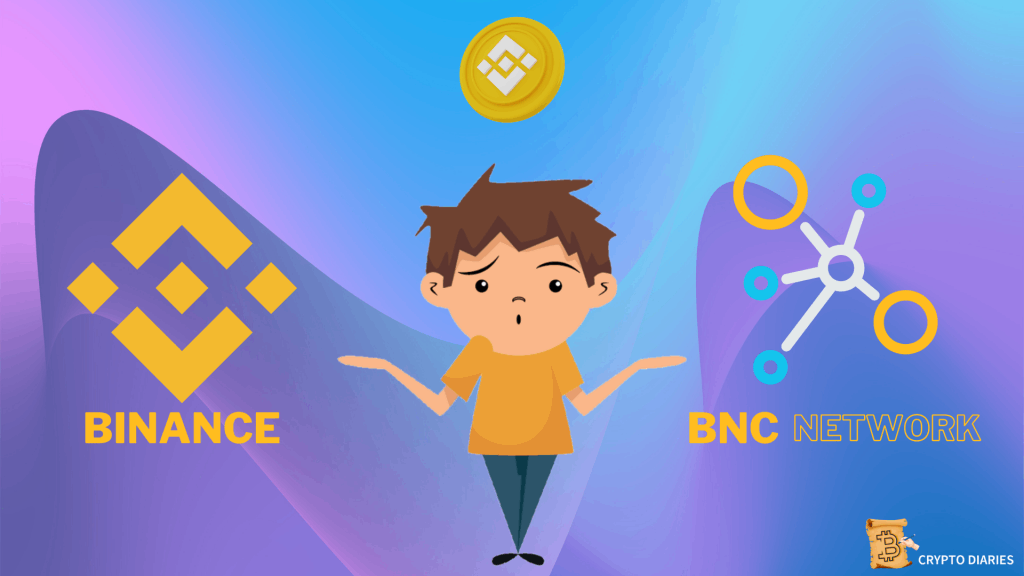Binance Exchange is the leading digital asset exchange in the world. The exchange was founded in Hong Kong back in 2017. Binance Exchange has a trading volume of more than $7 billion as of the second quarter of 2022. It has relocated its head offices from Hongkong to Malta and applied for licenses in several countries. This is significant because rigidity and consistency are essential for money.
The exchange focuses heavily on cryptocurrency trading. Binance provides crypto-to-crypto trading in over 600 digital currencies and web tokens, including Bitcoin (BTC), Ethereum (ETH), Litecoin (LTC), Dogecoin (DOGE), and the company’s native coin, Binance Coin (BNB).
A Deep Dive into Binance Exchange
The Binance exchange, best known for crypto-to-crypto trading (trading between two cryptocurrency pairs), has some of the lowest transaction fees among other crypto exchanges. It has high liquidity and offers discounts to users who pay in digital BNB tokens.
Binance provides high computation throughput with the capacity to process approximately 1.4 million orders per second. This is due to the high safety and security standards as well as a multi-tier and multi-clustered architecture. The exchange accepts and transacts more than 600 coins for trading, including XRP, Ethereum, Shiba Inu, and its own native BNB tokens.
Using Binance Exchange to Trade Crypto Currencies
Binance, like other cryptocurrency exchanges, provides services related to trading, listing, fundraising, and delisting or withdrawing. Binance is a centralized cryptocurrency exchange that allows virtual currency aficionados to raise funds through initial coin offerings (ICOs). Many traders and seasoned investors use Binance to exchange and invest in various digital currencies.
Binance is a centralized crypto exchange, making it susceptible to government sanctions and regulations. Users must comply with meeting the necessary KYC prerequisites before conducting any transactions on the platform. After successfully creating a trading account, consumers can begin trading by depositing cryptocurrency funds into their Binance-provided public digital wallet address.
The Binance exchange accepts three types of trading orders namely: limit orders, market orders, and stop-limit orders. Limit orders are only executed at the limit price specified by the trader. There are two types, buy limit and sell limit. Market orders are executed immediately at best possible market price. Stop-limit orders become valid only when the market price reaches a certain level.
Binance provides an additional four types of orders for cryptocurrency derivatives, specifically futures contracts. Among these trade orders are:
- Stop Market Order (Market halt order)
- Order with a trailing stop
- Post Only Order
- Order with a TP/SL limit
Binance does not charge any fees associated with cryptocurrency or fund deposits. Withdrawals, however, incur a transaction fee that varies depending on the cryptocurrency and the amount being transacted.
Binance US
Binance.US is a virtual currency exchange exclusive only to people who live in the United States. Consumers in the US can buy, sell, trade, convert, and stake over 120 popular virtual currencies on the platform, including Bitcoin (BTC), Ethereum (ETH), Solana (SOL), and Cardano (ADA).
Trading Transaction Fees
Binance.US imposes a single 0.1% spot trading fee, which is relatively lower than the charges levied by several other United states exchanges, such as eToro (about 0.75% for Bitcoin trades) and Coinbase (which charges 0.5% for trading costs and a standard rate of up to $2.99 per trade, depending on the transfer amount). Binance.US also has a 0.5% Instant Buy/Sell fee for traders in a hurry.
Binance adds 4.5% to debit card transfers (unlike its global brokerage, Binance. Credit card transactions are not permitted in the United States). Cash deposits and withdrawals via ACH bank money transfers are free, whereas bank money transfers cost $15 per transaction. The fees for cryptocurrency withdrawals vary by virtual currency; Bitcoin withdrawals cost 0.0005% with a lower withdrawal limit amount of 0.001 bitcoin.
The Number of Cryptocurrencies Available on the Exchange
Nearly 60 virtual currencies are available for purchase and selling in the United States, including Bitcoin, Ethereum, Bitcoin Cash, Litecoin, Chainlink, Dogecoin, and other popular virtual currencies. (Would you like to learn more? Learn about cryptocurrency and how it works.)
BNB Coin
What is Binance Coin (BNB)?
Binance Coin is the virtual currency issued by the Binance exchange. It trades under the symbol BNB. Binance coin was initially running on the Smart contracting platform’s blockchain, Ethereum, using the ERC 20 standard. However, it has become the Binance chain’s native token. BNB was launched in 2017 as an initial coin offering (ICO) with a strict limit of 200 million Binance coins.
Binance distributed 10%, or 20 million, BNB tokens to angel shareholders, 40%, or 80 million, tokens to the core team, and the remaining 50%, or 100 million, coins to the various ICO participants.
Nearly half of the money collected during the Initial coin offering process was solely for branding and marketing the exchange. The remaining one-third was used to develop the Binance framework and upgrade the Binance ecosystem.
Burning Mechanism in Binance Coin (BNB)
Even though Binance offered 100 million Binance tokens in the initial stages of the ICO, the total current supply is lower than the minted amount. Binance spends one-fifth of its quarterly profits to repurchase and destroy Binance coins held in its treasury. This destroying process is known as burning. The burning mechanism significantly reduces BNB supply increasing its demand in the cryptosphere.
Binance has been holding these burning events regularly. The most recent BNB burn occurred on April 15, 2021, when Binance burnt a total of 1,099,888 BNB, equivalent to USD 595,314,380 in tokens. Binance’s 15th quarterly BNB burn is the largest in US dollars. BNB token amount has decreased from 169,432,937.
Uses of BNB
Essentially, BNB comprises two groups of functions. It is the Binance exchange’s native virtual currency and parts as an exchange token. This digital asset has a variety of applications, and users can choose how to spend their Binance Coins. BNB coins, for example, can be used to make online and in-store purchases.
People also use BNB to cover expenses incurred during travels for merchants accepting crypto payments, creating smart contracts, lending money, and doing other things. Surprisingly, millions of BNB coins have already been used in such applications. The BNB coin usage brings the world closer to the massive adoption of crypto payment platforms and currencies.
BNB can be used for processing and completing payments (at sites like Crypto.com, Monetha, and HTC); to book travel accommodations (at sites like TravelbyBit, Trip.io, and Travala.com); for amusement (virtual gifts, card packs, lotteries); to pay for online services (BitTorrent, Canva, Storm); and even for monetary reasons (take out a loan at ETHLend or make investments at Moeda).
Aside from that, the coin may be used as an investment vehicle. Investors can buy the coin and sell it at a higher price.
BSC SmartChain Network
Introduction to the Binance Chain
Binance Chain (BSC) is a distributed ledger that runs alongside Binance Chain, the company’s flagship blockchain (BC). It was released with the explicit goal of incorporating smart contracts’ computation, which was not supported in BC.
Smart contracts are lines of code that run automatically when predefined requirements are met. They are decentralized applications (dApps) in the cryptographic ecosystem and are most common on Ethereum’s smart contracts blockchain.
Binance Chain blockchain network uses the Tendermint Byzantine fault tolerance (BFT) general agreement mechanism. The agreement is more commonly found on the Cosmos public ledger. Because the Binance Chain and Cosmos blockchain technologies express a common consensus mechanism, they also share the Proof of Stake (PoS) model of governance and transfer validation that Cosmos employs.
Introduction to Binance SmartChain
In September 2020, around one and a half years after the debut of its more established sister BC, Binance Smart Chain (BSC) went live. It is a platform for smart contracts that imitates the features of Ethereum and other decentralized app platforms like Tron and EOS.
Interestingly, despite having the option, Binance chose to introduce a new blockchain following the Binance Chain instead of improving it. The exchange claims that adding smart capabilities to the BC distributed ledger would have slowed network speed and reduced network efficiency.
The December 2017 CryptoKitties issue on Ethereum and, more recently, the Solana network are just two examples of how smart contracts tend to slow down their host networks.
The best course of action for Binance was to build a second blockchain to host smart contracts that were also compatible with the popular dApp network Ethereum. Binance, which was attempting to capitalize on the digital art (NFT) and decentralized finance movements, appeared to have no time to build a brand-new blockchain from scratch.
Since Ethereum is the dominant global “King of dApps,” Binance may have found it simple to fork it because of the code’s accessibility in the open-source community.
To distinguish Binance Smart Chain from Ethereum, Binance modified the Go Ethereum (Geth) client to produce it. In contrast to Ethereum’s present Proof of Work consensus process, they chose a Proof of Staked Authority (PoSA) consensus mechanism (PoW). PoSA enables quick block times and inexpensive transactions.
The Binance Smart Chain in Action
Test net tokens that can stand in for different assets can be created and distributed if Bep-20 is compatible. BEP-20 tokens are thought of as the BSC version of ERC-20. On the Binance smart chain, several features are available. The following list includes some of these various parts at their best:
Cross-Chain Functionality
As an alternative blockchain to the Binance chain, the Binance Smart Chain was created. Despite being separate from the Binance chain, the Binance smart chain utilizes a double-chain architecture. The dual chain feature makes it possible to transfer and receive digital assets between blockchains securely. One of the features that have allowed the Binance chain to transfer assets more quickly than other blockchains is cross-chain flexibility and adaptability. Additionally, the Binance Smart Chain can support robust decentralized applications. For instance, the easiest way to transfer tokens between chains is probably through the Binance Chain Wallet, which is accessible on Chrome and Firefox (e.g., BEP-2 to BEP-20 or vice versa).
Consensus
The Proof-of-Stake consensus algorithm allows for a three-second block time. It uses the Proof of Staked Authority (PoSA) principle, in which participants stake Bitcoins in exchange for the right to approve transactions. They will get the transaction fees from all of the blocks of transactions as soon as a valid block proposal is accepted.
Pegged Coins
Pegged coins have drawn a lot of interest from DeFi experts in recent years. When connected to other assets, cross-chain currencies have gained tremendous value. Examples of pegging assets where the coins are pegged to include precious metals such as gold and fiat money such as the US Dollar.
Conclusion
Binance Smart Chain has risen to the top of the global blockchain popularity list within a few years. Because Ethereum only processed about 1.7 million transactions on the same day, the blockchain used by Binance smart chain has more than thirteen million transactions per day, breaking records. It is implausible that Ethereum’s new upgrade implemented this year, will be sufficient to defeat Binance smart chain’s impending success.

